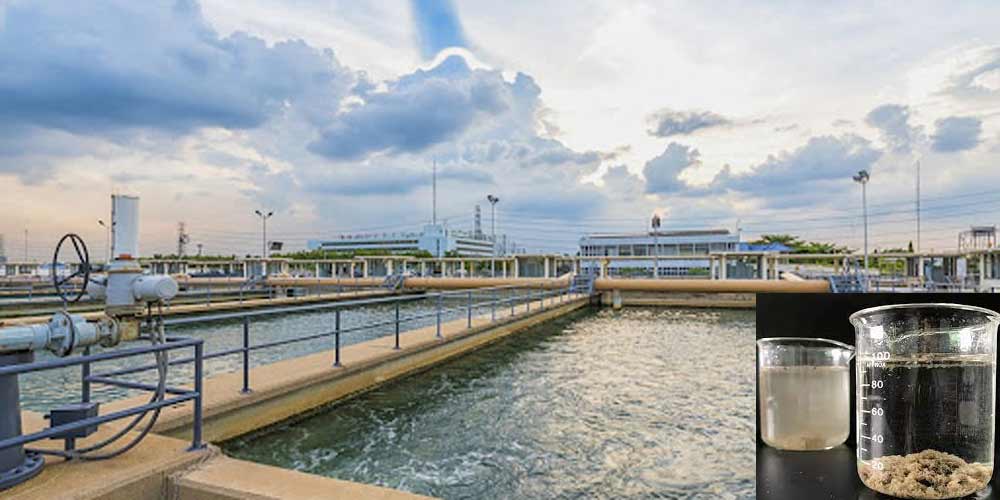التكتلعملية تُستخدم في مختلف الصناعات، وخاصةً في معالجة المياه ومياه الصرف الصحي، لتجميع الجسيمات العالقة والغرويات في جزيئات مُركّبة أكبر. يُسهّل هذا إزالتها بالترسيب أو الترشيح. تُعرف المواد الكيميائية المستخدمة في عملية التكتل باسم المُركّبات. ومن أكثرها شيوعًا واستخدامًا بولي أكريلاميد.
بولي أكريلاميدبولي أكريلاميد هو بوليمر مُصنّع من مونومرات الأكريلاميد. يتوفر بأشكال متنوعة، منها الأنيونية والكاتيونية وغير الأيونية، ولكل منها استخدامات خاصة. يعتمد اختيار نوع بولي أكريلاميد على طبيعة الجسيمات في الماء والنتيجة المرجوة من عملية التخثر.
بولي أكريلاميد الأنيوني مشحون سالبًا، ويُستخدم غالبًا في معالجة مياه الصرف الصحي التي تحتوي على جسيمات موجبة الشحنة، مثل الطين والمواد العضوية. أما بولي أكريلاميد الكاتيوني، فهو مشحون موجبًا، وفعال في معالجة المياه التي تحتوي على جسيمات سالبة الشحنة، مثل المواد الصلبة العالقة والرواسب الطينية. أما بولي أكريلاميد غير الأيوني، فهو عديم الشحنة، ومناسب لتكتل مجموعة واسعة من الجسيمات.
تعمل مُركّبات بولي أكريلاميد على الامتزاز على سطح الجسيمات، مُشكّلةً جسورًا بينها، ومُكوّنةً تكتلات أكبر. تُسهّل هذه المُركّبات المُركّبة ترسيبها أو ترشيحها من الماء. يُفضّل بولي أكريلاميد لوزنه الجزيئي العالي، مما يُعزّز قدرته على التجسير والتكتل.
إلى جانب بولي أكريلاميد، تُستخدم مواد كيميائية أخرى أيضًا في عملية التخثر، وذلك حسب الاحتياجات الخاصة لعملية المعالجة. المواد المُخثرة غير العضوية، مثلكبريتات الألومنيوميُستخدم الشبّة وكلوريد الحديديك بشكل شائع في معالجة المياه. تُشكّل هذه المواد الكيميائية تكتلات هيدروكسيد معدنية عند إضافتها إلى الماء، مما يُساعد على إزالة الجسيمات العالقة.
الشبة، على وجه الخصوص، تُستخدم على نطاق واسع في تنقية المياه منذ سنوات عديدة. عند إضافتها إلى الماء، تخضع الشبة للتحلل المائي، مكونةً تكتلات من هيدروكسيد الألومنيوم التي تحبس الشوائب. بعد ذلك، تترسب هذه التكتلات، ويمكن فصل الماء المصفى عن الرواسب.
يُعدّ التخثير خطوةً أساسيةً في عمليات معالجة المياه، إذ يضمن إزالة الشوائب وإنتاج مياه نقية. ويعتمد اختيار المُخَثِّر على عوامل مثل خصائص المياه المراد معالجتها، ونوع الجسيمات الموجودة، والنتيجة المرجوة من المعالجة. ويلعب البولي أكريلاميد وغيره من المُخَثِّرات دورًا حيويًا في تعزيز كفاءة أنظمة معالجة المياه والصرف الصحي، مما يُسهم في توفير مياه شرب آمنة وصالحة للاستخدامات المختلفة.
وقت النشر: ٢٦ فبراير ٢٠٢٤


